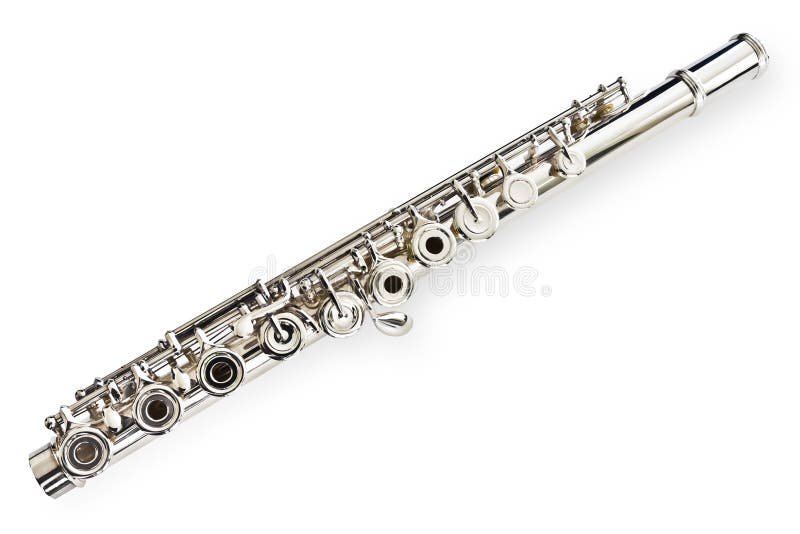Today I'm going to talk about the flute.
The flute is a family of musical instruments in the woodwind group. A flute is an aerophone or reedless wind instrument that produces its sound from the flow of air across an opening. According to the instrument classification of Hornbostel–Sachs, flutes are categorized as edge-blown aerophones.
A musician who plays the flute can be referred to as a flute player, flautist, flutist or, less commonly, fluter or flutenist.
The flute is not made of one continuous piece of metal; it is divided into three sections called joints. These three are the head joint, the middle joint and the foot joint. These pieces are connected by thinner metal tubes called tenons.
Let's learn about the anatomy of a typical flute from end to end.
The flute barrel is a small fluted area at the top end of the middle joint of the flute which serves no acoustic purpose, but helps to balance the flute's looks and usually carries the logo of the maker of the flute engraved on its surface.
The embouchure hole is a small hole in the head joint of the flute where air blown by the player enters the flute.
The crown caps the end of the flute near the embouchure hole, directing sound down the flute past the key holes.
The foot joint is the last of the three sections of the flute, is where sound emits from the flute.

The head joint is the first of the three sections of the flute where the sound of the flute originates as the player blows air into the flute through the embouchure hole

The middle joint is the second of the three sections of the flute.
 Flute keys are small round padded metal covers that are mounted on metal
rods, which allow them to alternatively cover and uncover the holes in
the sides of the flute when combinations of fingerings are made on the
flute. They change the flow of air in the instrument and thereby raise
or lower the pitch.
Flute keys are small round padded metal covers that are mounted on metal
rods, which allow them to alternatively cover and uncover the holes in
the sides of the flute when combinations of fingerings are made on the
flute. They change the flow of air in the instrument and thereby raise
or lower the pitch.
No hay comentarios:
Publicar un comentario